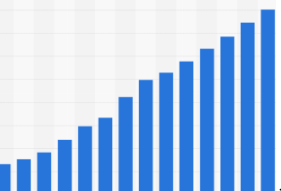 The retail environment has changed remarkably over the last decade, influenced largely by e-commerce. This transformation has been characterized by an explosion of online sales that have defined the way people buy, and also how businesses function. A deep dive into the retail e-commerce sales worldwide from 2014 and 2024 also means dissecting a market that is constantly changing due to technological innovation, global events, shifting consumer behaviors, and more. Here’s a 101 on retail e-commerce sales worldwide from 2014 to 2024.
The retail environment has changed remarkably over the last decade, influenced largely by e-commerce. This transformation has been characterized by an explosion of online sales that have defined the way people buy, and also how businesses function. A deep dive into the retail e-commerce sales worldwide from 2014 and 2024 also means dissecting a market that is constantly changing due to technological innovation, global events, shifting consumer behaviors, and more. Here’s a 101 on retail e-commerce sales worldwide from 2014 to 2024.
2014-2018
This duration can be considered a critical growth period for e-commerce. Approximately $1.3 trillion was generated in global retail e-commerce sales worldwide in 2014 This era saw the swelling of internet users, the emergence of m-commerce, and the growing stature of e-commerce platforms like Amazon, Alibaba, and eBay.
This period also saw the rise of online shopping convenience, as consumer attitudes changed. Thanks to better user experiences on e-commerce websites, that increased payment security measures like SSL, and a faster response in terms of shipping times. Global retail e-commerce sales had already more than doubled to $2.8 trillion by 2018. Among them, the adoption of smartphones has been a strategic tool that enabled mobile to be the protagonist in sales online.
2019-2020: Fast Growth in a Changing Economy
While e-commerce undergoes significant change from 2019 to 2020, with the COVID-19 pandemic playing a large part in this. In 2019, e-commerce sales hit approximately $3.5 trillion and they continued to grow throughout the year as well. But, the 2020 pandemic accelerated this like never before. Lockdowns and social distancing restrictions as well as the closure of brick-and-mortar shops mean more consumers are shopping online.
This drastic transition led to a massive spike in the amount of e-commerce transactions totaling almost 4.2 trillion dollars in 2020 alone! The pandemic further showed the necessity of e-commerce to both businesses as well as consumers, adding additional fuel for digital transformation in retail. The companies that quickly pivoted their business models to essentially compete in a virtual space benefited the most.
2021-2024: Continued Growth & Innovation
After the pandemic period ended, e-commerce continued to grow steadily though at a somewhat slower rate than at its peak in 2020. Breaking $4.9 Trillion in Global 2021 Retail E-commerce Sales, the growth has been driven by the continued advancements in technologies such as augmented reality (AR) for virtual try-ons, artificial intelligence (AI) for personal shopping experiences, and further developments in logistics & delivery services.
Worldwide retail e-commerce sales to hit ~$6.4 trillion by 2024. This growth potential mirrors trends that were set in motion much before the COVID-19 pandemic, such as online shopping expanding to new geographies and penetration of social media for shopping (social commerce), adding to it are cryptocurrencies or digital wallets becoming mainstream payment methods.
Between 2014 and 2024, this decade has provided massive growth besides the metamorphosis of retail e-commerce. Back in 2014, the worldwide revenue generated from e-commerce was US$1.3 trillion and by 2024, this number is forecast to hit $6 trillion. This growth path not only demonstrates the growing significance of digital commerce around the world but also underlines how it will revolutionize retail.
As technology evolves and consumer preference moves away from traditional brick-and-mortar shopping to various forms of convenient, multi-channel retailing. E-commerce is on its way to becoming a cornerstone in the very functioning of the industry itself! As the industry evolves, however, businesses that can rapidly adapt to changes in their digital sales process will largely be best suited for success moving forward.

No Comments
Leave Comment